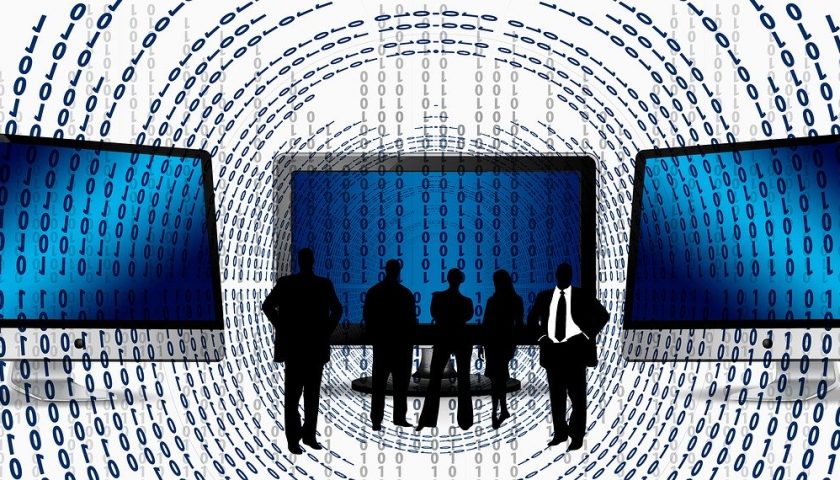
New realities in the working world are here to stay
Countries around APAC are starting to phase slowly back into normalcy with additional safety measures like COVID-19 tracking apps for citizens.
However traditional businesses have had to adapt to new realities of a post-virus world and the implications for CIOs will be profound. The days of the IT department being responsible for infrastructure and operations, with a relentless focus on cost reduction, are gone.
In an interview with CIO Tech Asia, Manish Bahl assistant vice president, Centre for the Future of Work Asia-Pacific at Cognizant said there’ll be a new phase develop for IT organizations, in which they are measured on a very different set of metrics than ever before.
“The IT mandate will stretch beyond the familiar realm of satisfying customers and employees, collaborating with the business and reducing costs, to becoming resilient, agile, responsive, flexible, secure, scalable and simple to manage,” he said. “As the pace of change accelerates, the need to modernize IT infrastructure will amplify. It can be overwhelming for CIOs who are not well prepared.”
According to Bahl, pre-pandemic work from home was a privilege for a few, but suddenly it has become a necessity for everyone.
“This sudden shift has caught many CIOs by surprise,” he said. “The pandemic has forced many to realize that they have only scratched the surface of their IT infrastructure readiness ― and that an inflexible, sluggish, inefficient infrastructure poses a more significant threat than the virus itself.”
“There will be significant infrastructure investments from companies to scale elastically to handle millions of remote employees, temp workers and/or customers.
The legacy kludges of technical-debt-riddled patchworks of systems will be deemed poison. IT departments need to be brutally honest in accepting which parts of the IT infrastructure are the major bottlenecks in enabling the new normal of remote working.”
Bahl said the shift towards digital will only accelerate and CIOs must be prepared. IT matters more than ever because technology has become the only thing that keeps us connected during our enforced social isolation.
For companies in the APAC region, they have just scratched the surface when it comes to becoming “truly digital.”
“The pandemic has provided immense learning to them on the importance of becoming digital at the core so that they can quickly bounce back when the going gets tough,” he said. “As the digital transformation phenomenon intensifies, companies must invest heavily in digitizing their processes to proactively address radically different market conditions.”
Bahl said the biggest challenge for CIOs is how to strike a balance between the present and the future states of IT infrastructure.
“To achieve this equilibrium, the first ballast is to discard [the] IT [department’s] traditional obsession with cost-cutting,” he said. “The simple fact is that a lower cost, but completely irrelevant backbone will condemn a company to lose in whichever market it operates in.”
There will be clear digital leaders and laggards in the post-virus world. While digital leaders will create entirely new ways of working with new tools, digital laggards will continue to replicate old ways of working with new tools, said Bahl.
Recently Cognizant, a global service company came out with the report, After the Virus: A Special Report Looking Back on the Next Five Years, which considers what the world will look like in 2023.
Written as if we were in 2025, it looks back at the time since the global pandemic and dives into the challenges faced so that businesses can chart a path forward through the coming months and beyond.
The report examines how education, health, shopping, and entertainment will become more virtual. How houses will be retrofitted with dedicated home office spaces as working at home becomes the norm, not the exception. It suggests that travel will become a last, not first, resort. It argues that the environmental agenda will gather momentum as we realize the virus is a scream for help from a planet that has added six billion people in under 100 years.
It also outlines how the virus will force a reckoning of how we treat aging, and how we regard privacy.
Key insights include:
Geopolitics will change. Will European solidarity withstand the pressure for Germans to prioritize Germans, Italians their fellow countrymen and women, etc.? Will China be ostracized by the global community? Or further embraced?
National politics will change. Will populism surge, or will deep states reassert themselves at a time when only governments have the scale to deal with existential threats?
Socioeconomics will change. The overnight nationalization of economies in avowedly capitalist countries will supercharge simmering debates about wealth inequality. Will faith in capitalism be weakened or strengthened by the stress test faced by economies around the world?
Business will change. Will global supply chains withstand breakdowns in what has become business-as-usual over the last generation or two? Will reshoring and localization require a complete about-turn for how multinationals operate? Will Mr. Justin Time survive?
Work will change. Will everyone work from home? Virtually? Will robots and AI be more popular or less so? (Their bugs seem sort of tame in comparison …) Will the gig economy be wiped away or the only port in a global storm?
Life will change. Will we ever shake hands again? Will we ever again sit next to a total stranger on a 15-hour flight? Will we pull up the drawbridges around our homes?
These, and a whole host of other facets of life and business as we know it, will all be changed by the pleomorphic spherical particles with bulbous surface projections that roam among us.
In this special report, the team from Cognizant’s Centre for the Future of Work considers what the world will look like in 2023 – a time that’s far enough away for the implications of the virus to have materially changed things but not so far away that pure idle speculation reigns supreme.
Socioeconomics will change. The overnight nationalization of economies in avowedly capitalist countries will supercharge simmering debates about wealth inequality. Will faith in capitalism be weakened or strengthened by the stress test faced by economies around the world?
Business will change. Will global supply chains withstand breakdowns in what has become business-as-usual over the last generation or two? Will reshoring and localization require a complete about-turn for how multinationals operate? Will Mr. Justin Time survive?
Work will change. Will everyone work from home? Virtually? Will robots and AI be more popular or less so? (Their bugs seem sort of tame in comparison …) Will the gig economy be wiped away or the only port in a global storm?
Life will change. Will we ever shake hands again? Will we ever again sit next to a total stranger on a 15-hour flight? Will we pull up the drawbridges around our homes?
These, and a whole host of other facets of life and business as we know it, will all be changed by the pleomorphic spherical particles with bulbous surface projections that roam among us.




